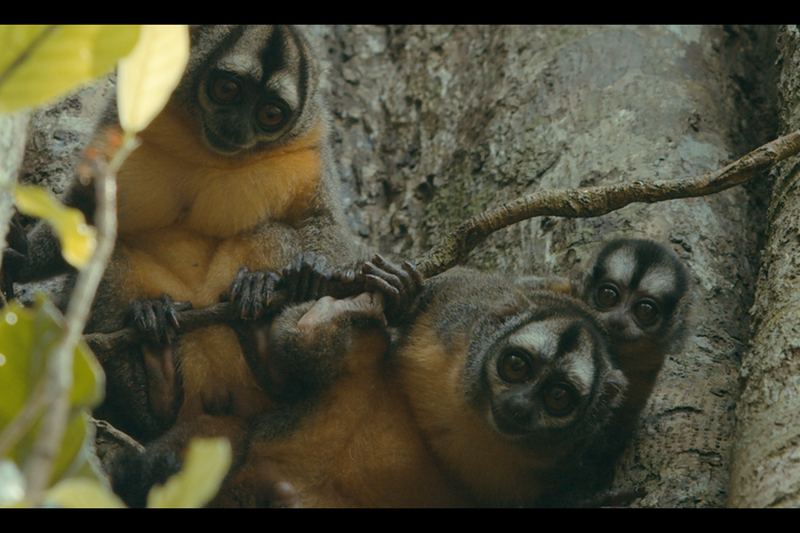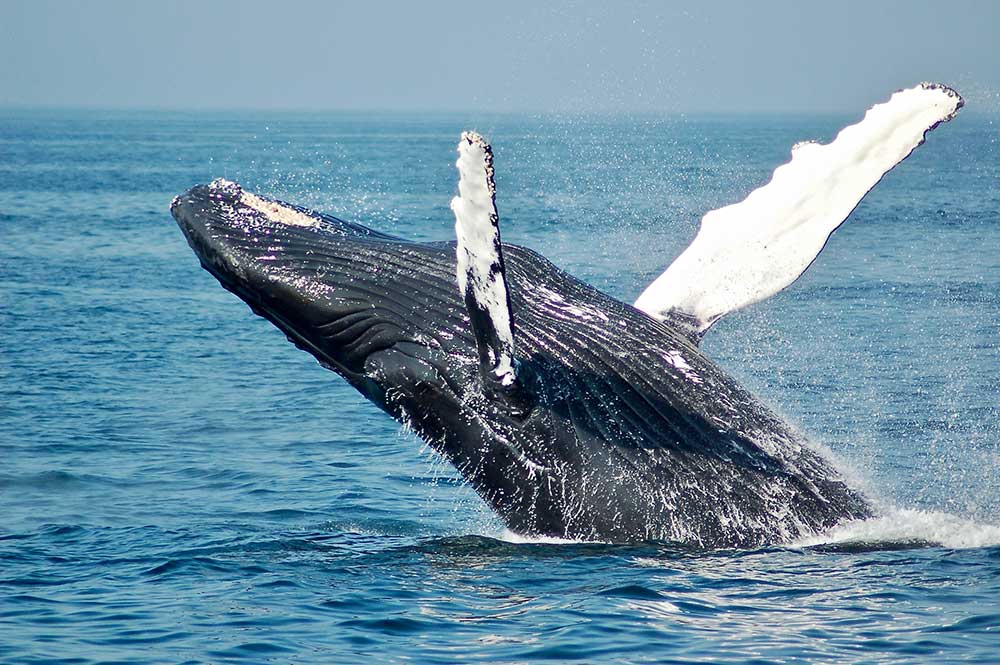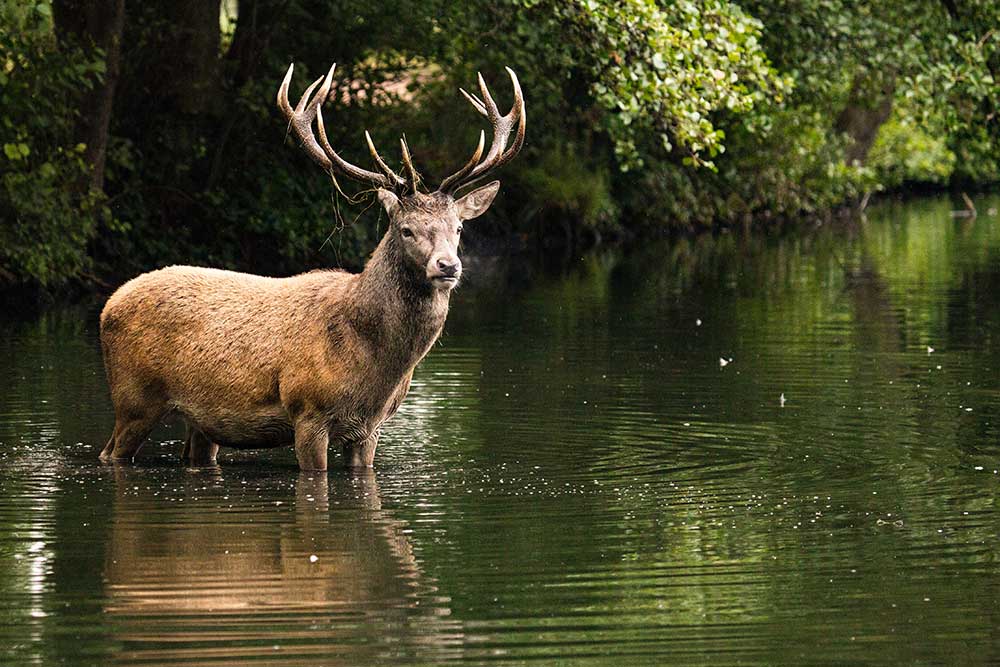Description
Musmuki tourism association is a community-based project located in Vista Alegre (VA), Peru, border with Colombia (60 km from Leticia, Colombia via the Amazon River). This community is surrounded by diverse Amazonian ecosystems, including flooded forests, lakes and creeks. This area offers unparalleled nature and cultural heritage, with an astounding biodiversity found nowhere else in the world. It is renowned as being home to the project’s namesake: the Musmuki night monkey, known as Nancy Ma’s owl monkey (Aotus nancymaae). This species is only found in Amazonian rainforests in Colombia, Peru and Brazil. VA is also home to the pink dolphin (Inia genoffrensis) and Tikuxi river dolphin (Sotalia fluviatilis), as well as myriad wetland birds. Musmuki is supported by Entropika, and forms part of the Innative tourism initiative. They offer low-impact nature activities, such as jungle hikes, wildlife watching tourism (WWT) and experiential tourism (ET), which are all guided by knowledgeable locals, offering an insight into local way of life and surrounding nature. The community takes great pride in sharing their knowledge about their territory, whilst also ensuring visitors learn about conservation efforts designed to preserve native species. Tourists can also enjoy visiting small-scale agricultural projects. The VA community is endeavouring to move away from a dependence on natural resource extraction, such as the trapping of night monkeys locally exploited for the biomedical research market, while using the Musmuki as their flagship species for tourism and ecosystems protection. VA decided to protect this species, including by implementing hunting bans and replacing the income obtained from illegal trade with the income generated from nature tourism. Overall, it creates a unique travel experience, combining adventure with learning opportunities focused on sustainable practices.
Motivation
Entropika has been working with VA since 2016 in improving their capacities to implement WWT and ET, while working alongside environmental law enforcement authorities to counter Illegal Wildlife Trade (IWLT) in the tourism business. Vista Alegre is a riverine community with a mix with Yagua and Tikuna indigenous people, who were settled until the 1970, and then moved to nearby areas. VA has a population of 310 inhabitants and belongs to the Mariscal Ramon Castilla Province, in Loreto department, Peru. As all Peruvian communities, they have a cabildo as authority structure. The Cabildo is a special public entity, whose members are associates of an indigenous or riverine community, elected and recognized by it, with a traditional sociopolitical organization, whose function is to legally represent the community, exercise authority and carry out the activities attributed to it by laws, their uses, customs and internal regulations of each community. The cabildo is composed by 5 people. Musmuki represents the local model to follow, where individuals have transitioned from night monkey traders, to guides that feel proud of their project. VA is in a critical transition. It demonstrates a community endeavouring to shift from a traditional dependency on natural resources, to working in collaboration with local actors to implement the sustainable use of nature to support their livelihoods. This narrative of change is particularly important as this area supports high levels of biodiversity and multiple endemic species. Those megadiverse but fragile ecosystems are critical to preserve as the threats of hunting and deforestation are intensifying climate change effects in this region. Thus, WWT and ET serve as an opportunity to provide more autonomy and resilience to Musmuki, in creating their own tourism enterprise and being their own operators, in a time where the tourism industry is affecting local fauna drastically. Finally, Musmuki may act as a flagship project for WWT in the border area, and offers the possibility for VA to transfer their skills and knowledge to other communities.
Boundary Map
Species or habitats
The Musmuki monkey, also known as Nancy Ma’s night monkey, is endemic to this part of the Amazon, holding a special place in the region’s culture and identity. The local indigenous Tikuna people believe that the monkey is a sacred guardian of the moon, and local communities revere it for its seed dispersal. Through its droppings, the Musmuki monkey helps to regenerate the annually flooded forest floor. It is also sadly one of the most exploited neotropical primates in the world — it’s small size, slow pace, and obvious nesting holes make it an easy target for capture.
Area Features
Musmuki, Nancy Ma’s owl monkey (Aotus nancymaae) - Species
Stability
The Nancy Ma´s owl monkey (Aotus nancymaae) is one of the most exploited neotropical primates for biomedical research. On the Colombian-Peruvian border of the Amazon, trafficking for biomedical research, including post-experimental releases into the wild and deforestation, present growing threats for this vulnerable species.
In Peru densities range from 13.6 individuals/km2 in areas where animals are trapped (Maldonado and Peck 2014) to 46.3 individuals/km2 (Aquino and Encarnacion 1986a) where trapping does not occur. This might be the result of long‐term extraction for the biomedical research market or a result of deforestation associated with destructive trapping methods. Although the impact is likely to mimic natural gap formation, of concern is that trees with appropriate nesting holes are targeted and lost in the process, which may have long‐term impacts on night monkey population recovery (Maldonado and Peck 2014). In addition, the species is affected by the pet trade promoted by massive tourism from Colombian operators (Maldonado and Waters 2017).
After having been subjected to research procedures, night monkeys are released back into the wild; the FIDIC does not conduct any follow up to determine how or whether individuals survive or the impact of their release on wild populations (Maldonado and Lafon 2017).
Threats
In the Colombian-Peruvian border, indigenous people and riverine/colonist communities have begun to exploit wildlife by charging a small fee to tourists visiting the Amazon River in return for a photo opportunity with the animal (“selfie tourism”). In some cases, these animals are sold as pets if tourists show interest. Infant animals are also carried by indigenous children, to arouse pity among visitors. This practice is mainly promoted by the Colombian agency OnVacation, where around 50 to 200 people can visit local communities daily for what they call “wildlife watching”. This practice not only encourages illegal trade and child labour, but also affects the autonomy and traditional culture of local people. Most of animals died between one to six weeks as they are not feed properly, handled by tourists and exploited for long hours. When they died, they are just replaced by a new one. This cruel and unsustainable wildlife extraction is affecting endangered species such as ateline primates (woolly monkeys, spider and howler monkeys), sloths, manatees and in general birds, reptiles, among others. In contrast, Musmuki offers WWT and ET, where tourists can watch a wide variety of wildlife nearby their lodge in nature, for instance, there is a family of night monkeys living just 50 m from the Musmuki lodge. Musmuki also empowers its members to be their own operators and distribute their profits equally and investing in the association.
Habitat loss and trade for biomedical research remain prominent threats to this species. Owl monkey species are used in biological, immunologic, and chemotherapeutic research, and is used as an animal model in Malaria vaccine development. Prior to the hunting ban implemented in 2010, VA supplied approximately 40% of the night monkeys sold illegally to the FIDIC laboratory in Leticia (Maldonado 2010). Unregulated releasing of trafficked animals may have resulted in the introduction of A. nancymaae north of the Amazon river (Bloor et al. 2012; Maldonado and Peck 2014), and this is possibly causing the displacement or hybridization of resident populations of this and other owl monkey species. Permits provided by environmental authority Corpoamazonia, allowed the capture of 800 monkeys per year, without prior population assessments to demine extraction quotas, impacts of released animals on wild populations, or zoonotic risks (Maldonado et al. 2023).
Increased deforestation for development and agriculture, in particular crop cultivation and large-scale timber extraction, are driving habitat loss and fragmentation in the region (Maldonado 2011). These effects can be irreversible as primates like the Musmuki rely on both primary and secondary forest. Moreover, there are secondary effects, such as disease emergence (Everard et al. 2020). Another threat in the area is the extraction of wildlife with tourism purpose. Many tourist attractions include interactions with captive wild animals, and some allow tourists to be photographed with the animals, known as “selfie tourism”. The captured individuals live in critical captivity conditions, have deficient diets and frequent physical contact with humans, which leads them to experience stress and diseases associated with captivity, which generally causes them an early death.
Actions taken for protection
Low-impact sustainable tourism. Musmuki tourist association provides income to 60 residents of Vista Alegre out of 310 total population. Hence, this provides an alternative income source to the trade of Musmuki monkeys for biomedical research, of which much of the community was dependent.
Legal actions against authorities and the biomedical facility (FIDIC). Since November 2021, the biomedical laboratory FIDIC which conducts malaria research on night monkeys, has had its facilities in Leticia closed, as it has been put under investigation. This follows collaborative legal actions taken by Entropika, and two green party senators. There are ongoing penal and disciplinary investigations requested by the Environmental Comptroller to the Attorney General of Colombia against Corpoamazonia (authority responsible for granting permits for the tenure of wildlife in tourism facilities).
A hunting ban, decided and designed by the VA community, in place since 2010. In Mocagua, Colombia Tikuna community the hunting ban applied since 2008 includes woolly monkeys mainly, and they are using his species as their flagship species. This is the result of a long collaboration with Mocagua, Amacayacu National Park and Entropika. Hunting bans and restrictions for other game species such as primates tapirs , large rodents, deer etc, are included in their management plan.
Entropika is exploring possible zoonotic risks. Preliminary results have shown that nine out sixteen samples evaluated from A. nancymaae resulted positive in the Pan-Herpesvirus screening (56% positivity). Additionally, one out of thirty-four A. nancymaae individuals (3% positivity) tested positive for flaviviruses (Vilchez at al. in prep.). Results will be shared with tri-border environmental agencies, to monitor populations and possible zoonotic risks.
Community Importance
For the People of Vista Alegre, nature continues to be the source of their livelihoods, and at the heart of this relationship is the Musmuki night monkey. Whereas before this was premised on extraction, in the biomedical trade of these monkeys, this is now moving towards a finance of conservation, producing a symbiotic relationship in the conservation of both community and nature. It has also reinforced the sacredness of this species for the people of Vista Alegre, a species with which their lives are so inextricably linked. For Tikuna people, the night monkeys are the guardians of the moon ensuring the moon is never stolen. This suggests the animals have an important role for believers of this myth as the moon influences women fertility, and determines the best sowing and harvesting dates. In the past the Payés preferred to gather with the gamekeepers during full moon, trusting night monkeys to be vigilant and take care of the beings involved in the gathering In addition, night monkeys are effective seed dispersers, being a critical species for the regeneration of flooded forests, helping to maintain plant diversity in Vista Alegre´s territory. This is important for the community because they rely on local resources and by maintaining the plant diversity it provides support to their way of living. It also allows them to have a healthier soil and land used for their agriculture activities.
Wildlife Watching Guidelines
Primates have highly developed senses, and hence are hypersensitive to stimuli, such as visual and audible stimuli. Below, we briefly outline precautions that can be taken with tourist groups to limit impact on primates.
Before Visit
- Only allow small tourist groups
- Ensure all tourists are appropriately vaccinated, and are not feeling unwell to reduce transmission of diseases to primates
- Ensure they have appropriate equipment
During Visit
- Reduce disturbance to primates by limiting time spent with each animal, only using red light as soon as they spot a primate or other animal, have mobiles turned off, ensure distance from primates is maintained (7 metres minimum), and have tourists remain as quiet as possible. Generally trying to limit destruction to the environment, by enforcing that no waste is left and treading carefully.
Fact 1
They form couples that last their entire life, and live in family groups of a couple and their offspring.
Fact 2
After their first week of life, the father takes care of the baby. The offspring cling on to their father’s belly or their back. When they can move on their own, the link between the father and the offspring remains very strong.
Fact 3
Because their diet is mainly composed of fruits, they are seed dispersal agents in the forests they inhabit. This helps maintain biodiversity.
Tikuxi river dolphin (Sotalia fluviatilis) - Species
Stability
The number of Tucuxis is declining, with threats including death caused by fishing gear and habitat degradation due to dams and pollution. Eliminating the use of gillnets – curtains of fishing net that hang in the water – and reducing the number of dams in Tucuxi habitat are priorities to enable the population to recover.
Threats
The threats of the grey dolphin in this area are generally the same as the pink dolphin.
Mercury pollution from small-scale gold mining activities is one of the main threats. They are seen as a competitor for diminished fish stocks, and are often killed or injured when people try to chase them away. They are also directly threatened by fishermen and fish nets, in which they are often accidentally entangled as bycatch. Sometimes they are purposefully used as bait by fisherman, as they attract fish of high value.
Another threat is habitat disruption from dam-building, deforestation, and boat congestion on rivers. Dam construction in this region isolates dolphin communities, resulting in high mortality. Deforestation can cause decline in fish populations who feed on fruits and seeds of trees, thereby affecting dolphins, as well as causing changes to river levels.
Bad tourist practises also threaten dolphins. Excessive noise pollution, feeding dolphins, and other mal-practises can contribute to distress, and interfere with and other behaviours.
Finally, climate change is posing an increasing risk causing far greater extremes in these seasonal hydrological cycles.
Actions taken for protection
- Similar to the Pink dolphin, Sustainable tourism. Musmuki tourist agency takes tourists dolphin-watching as part of their tours. Hence, the community is encouraged to maintain the river dolphin population, as they are of high value to tourism. Following healthy dolphin-watching guidelines by limiting ‘express tourism’ and taking smaller groups, to limit boat congestion which can affect dolphins’ behaviour.
- Colombia has a permanent moratorium from 2017 on the trade in piracatinga (a catfish), for which river dolphins are used as bait. Peru does not. Brazil has just reinstated its moratorium, after it lapsed in 2020. Maintaining these moratoriums and trying to instate them in all Amazon nations is integral (IWC 2022).
- NGO’s working in collaboration with communities to create more accurate population estimates and better assessment of threats.
- Strengthening education to teach and empower communities to protect these species, building on existing traditional ecological knowledge.
- Promoting close work between NGOs and private companies, governments and international legislative bodies like the International Whaling Commission.
Community Importance
Whilst the grey dolphin is not as famous as the Amazonian Pink dolphin, they play a major role in the ecosystem and in the local community. They are known for being playful and social, including with humans, and travelling in large groups.
Alike to the pink dolphin, they are a strong indicator of a healthy river ecosystem, with plentiful fish stocks, and help maintain and balance the food chain through predation. Hence, they are an important emblematic creature to the People of Musmuki, but also help maintain the aquatic Amazon ecosystem which is integral to their existence.
Wildlife Watching Guidelines
Responsible sighting and observation apply to commercial-tourists as well as research groups. Following the Guía-observación Responsable Delfines Río Amazonas Colombiana guidelines (Trujillo et al. 2018) .Below is a brief summary of some guidelines that must be adhered to:
Before Visit:
- Take tour with responsible company, and all vessels used must be licensed by port captaincy
During Visit:
- Vessel must maintain course parallel to the direction in which dolphins are swimming. Escape routes, in front and behind dolphins, must always be maintained.
- When the boat is in caution zone, between 25 and 50m, maximum speed should be 3km/h
- Boat’s engine must be kept running the entire time, to alert dolphins of location
- Do not approach dolphins with calves, calving or mating
- Do not feed dolphins
- Do not swim with dolphins
Fact 1
They form large groups, of up to 40 dolphins, particularly when food is abundant
Fact 2
Very playful!
Fact 3
It’s one of the smallest dolphins in the world.
Rainforest - Species
Stability
The Amazon rainforest is declining at an alarming rate due to several factors including deforestation for agriculture and cattle ranching, mining, oil drilling, and climate change. According to a report by Brazil's National Institute for Space Research (INPE), deforestation in the Brazilian Amazon increased 9.5% between August 2019 and July 2020 compared to the previous year. This loss of forest cover not only threatens biodiversity but also has global implications as the Amazon plays a crucial role in regulating the Earth's climate by absorbing carbon dioxide from the atmosphere.
In the border between Peru and Colombia, the habitat is declining due to deforestation and unsustainable extraction of resources by local communities.
Threats
The Amazon Rainforest is facing different threats to the habitat.
Deforestation: The clearing of forests for agricultural activities such as cattle ranching and soybean farming has been the main driver of deforestation in the Amazon.
Climate change: Rising temperatures, changing rainfall patterns, and more frequent droughts are affecting the health of the forest and increasing the risk of wildfires.
Illegal logging: Uncontrolled logging threatens both biodiversity conservation efforts as well as indigenous communities that depend on forest resources for their livelihoods.
Wildlife trafficking: Smuggling wildlife from Amazonian forests to other countries, to have them as pets but also the use of wildlife in medical research or with tourism purposes.
The area where VA is located also faces the same threats, they are usually discrete and not as continuous like in other regions, but this is making it difficult for the different authorities to tackle.
Actions taken for protection
There are several actions being taken to protect the Amazon rainforest, like setting up protected areas in where governments and conservation organizations have established national parks, reserves, and other protected areas to safeguard critical habitats in the Amazon. The adoption of sustainable land use practices such as agroforestry can help reduce deforestation while promoting economic development for local communities. Sustainable tourism is also part of the economic options for local communities to develop an activity that works towards the conservation of the habitat. Collaborative efforts between governments, NGOs, research institutions and international organizations are necessary to address transboundary issues related to climate change mitigation and biodiversity conservation in the region.
The actions taken to protect the species described above are also protecting the habitat in this specific area.
Community Importance
Protecting the Amazon rainforest is essential for preserving biodiversity and also ensuring human well-being locally and globally. Indigenous peoples living in the Amazon have unique cultural practices that are closely tied to their environment and traditional knowledge systems. Their community’s development depends directly on the activities they can perform on the WHA. The communities living in or near the forest depend on its resources for their subsistence needs such as hunting, fishing and gathering non-timber forest products.
There is almost no presence of the governments in either side of the border. Local communities rely on the activities and resources they can perform in their territory to survive. This means that their wellbeing is fully connected with the quality of the habitat they lived in. To keep this communities alive, the rainforest needs to provide them with what they need and this means they also need to develop their activities in a sustainable way.
Wildlife Watching Guidelines
Fact 1
The Amazon is the largest tropical rainforest in the world, covering an area of over 6 million square kilometres across nine countries: Brazil, Peru, Colombia, Venezuela, Ecuador, Bolivia, Guyana, Suriname and French Guyana.
Fact 2
The forest is home to an estimated 10% of all known species on Earth and contains more than 40,000 plant species.
Fact 3
The Amazon River runs through the heart of the forest and is one of the longest rivers in the world at around 6,400 km long.
Management Plan
Management Plan File
Overview
- Title
- Amazon Night Monkey Heritage Area
- Level
- Candidate
- Name Location
- Vista Alegre, Peru
- Name Species Group
- Monkey
- Name Habitat Group
- Rain Forest
- Country
- PER
- Approximate size (sq km)
- 640



